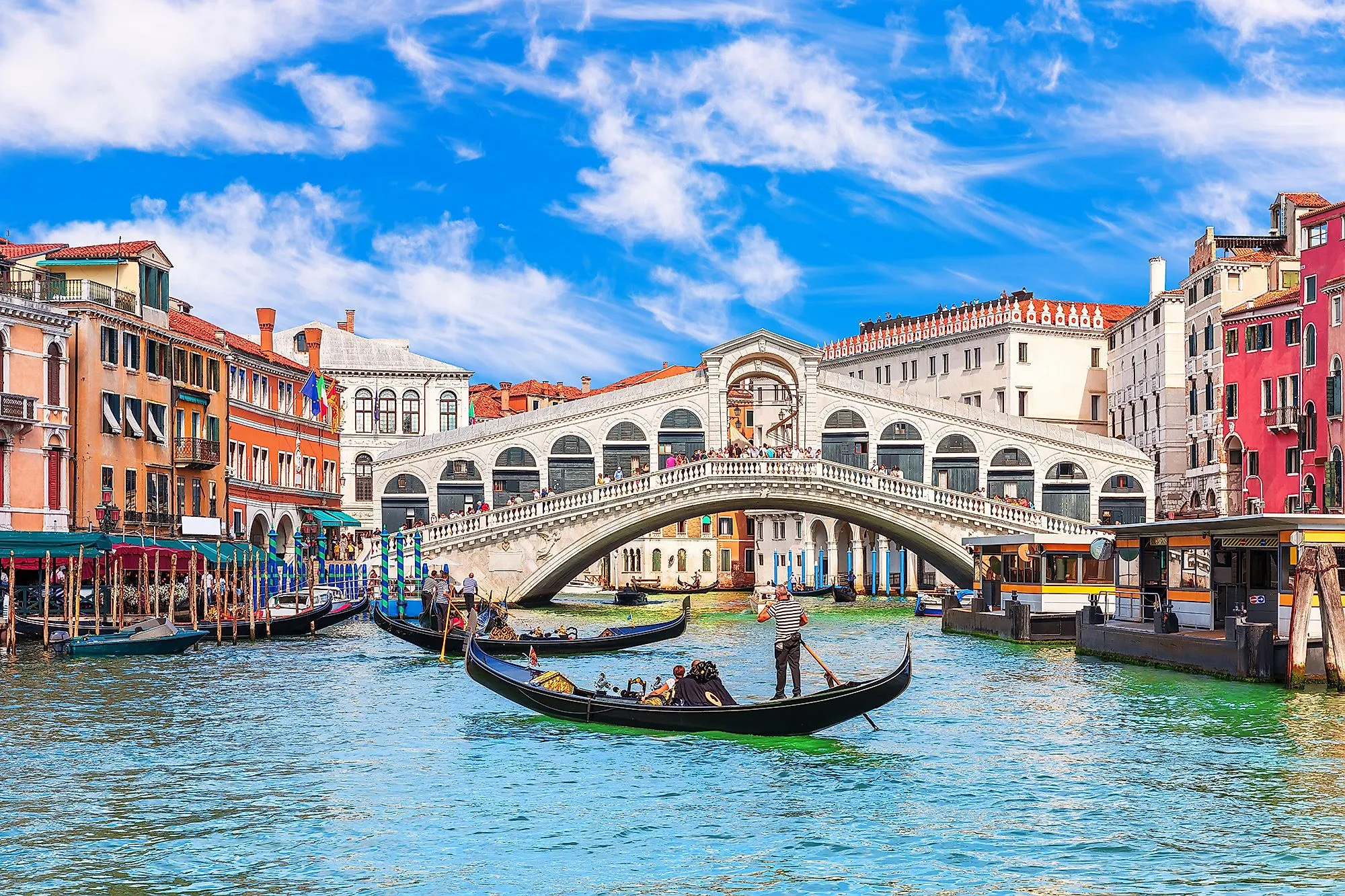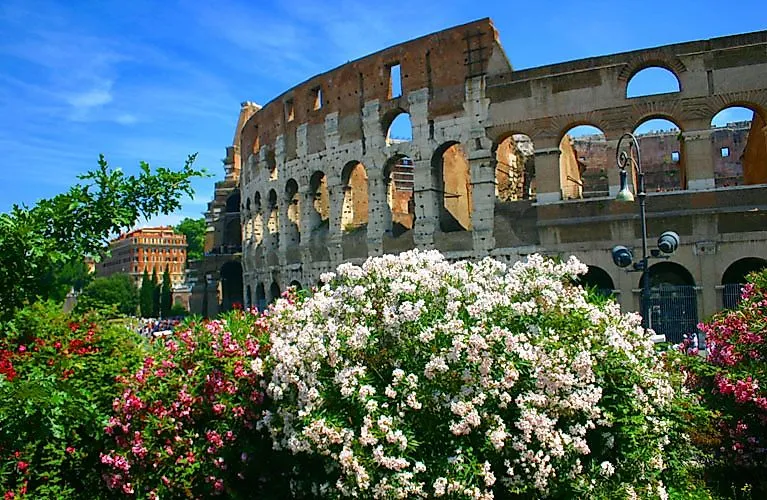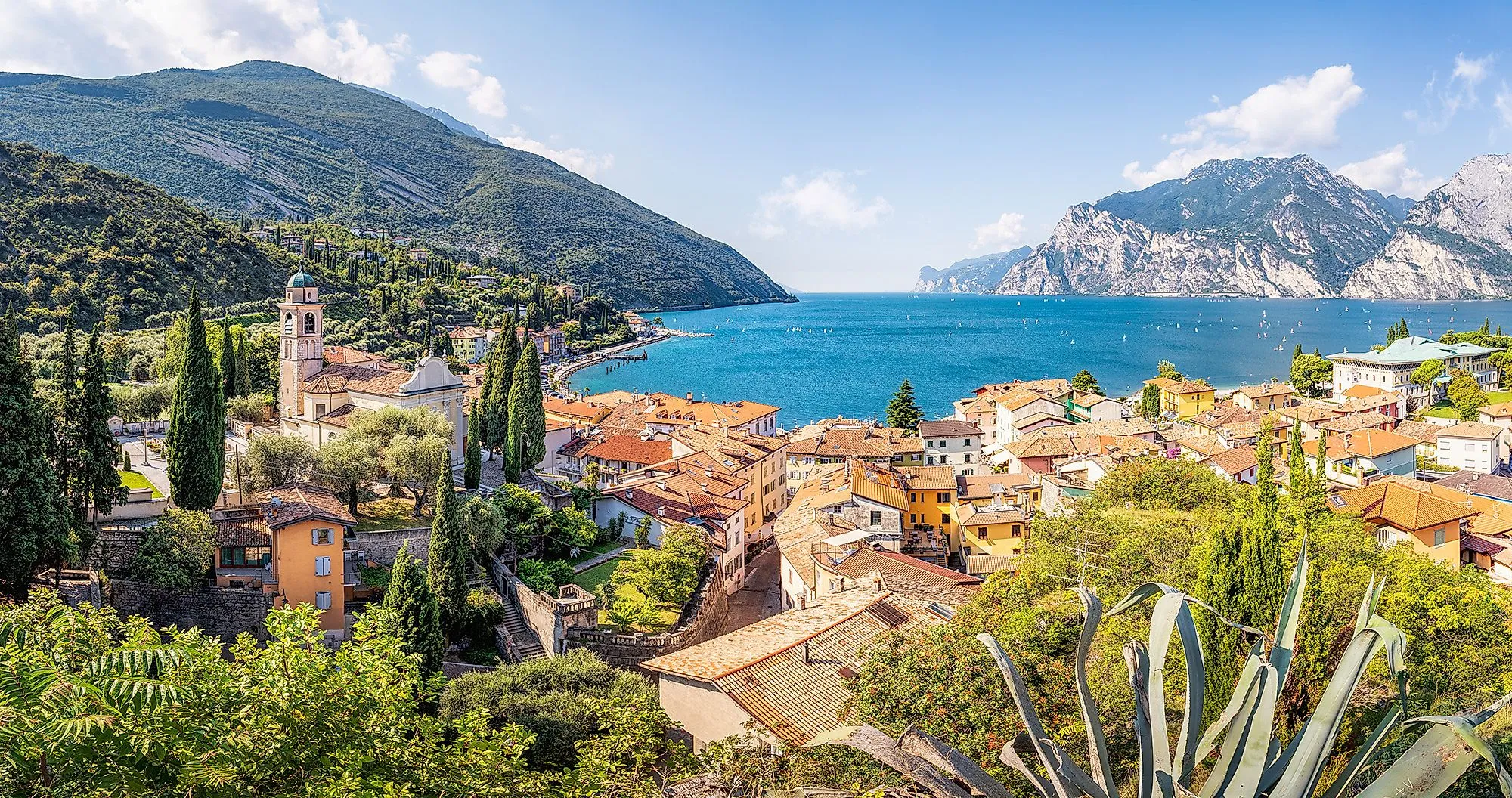Where is Italy?

Italy is located in the south of Europe on the Apennine Peninsula. With an area of 301,300 km2, it is the seventh largest country in Europe and is home to around 60 million people. The capital is Rome, also known as the "Eternal City". Other important cities are Milan, Naples, Turin and Venice. Italy is bordered to the north by the Alps and shares borders with France, Switzerland, Austria and Slovenia. The two small countries of San Marino and Vatican City are enclaves within Italy. The Mediterranean islands of Sicily and Sardinia are also part of Italy. The longest river is the Po with a length of 652 kilometers, it flows from the French border to the Adriatic Sea.
It is about 1,200 kilometers from the north of Italy to the southern tip. The coastline stretches for around 7,500 kilometers and has a variety of characters: from beautiful, gently sloping sandy beaches to rocky and rugged coastlines. In addition to beaches, there are also numerous mountains that invite you to hike and explore. The highest mountain in Italy is Monte Bianco (Mont Blanc) with an altitude of 4,810 meters.
Highlights from Italy
Val d'Ega Dolomites
Fascinating mountain world of South Tyrol
What is the weather like in Italy?
There are various climate zones in Italy, which differ depending on the region. The Alps in the north have an alpine climate with cold winters and mild summers. The Po Valley has a temperate climate, while the coastal regions have a Mediterranean climate with hot, dry summers and mild, wet winters. In the south and on the islands of Sicily and Sardinia, the climate is subtropical with very hot summers. The best time to travel therefore depends on your preferences and the destination you are planning to visit. Let the live webcams in Italy put you in the vacation mood - one click is all it takes to experience the current weather up close with the livecams, whether on the beach, in the Alps or in the historic streets of Rome.
What can you experience in Italy?

Italy is ideal for city trips, e.g. to Venice, Florence, Pisa or Rome, which is rich in history and culture. The capital Rome is home to many important sights that you have to see: The Colosseum, St. Peter's Basilica, the Spanish Steps and the Pantheon are just a few of the significant attractions. The Vatican is the smallest independent state in the world, so a trip to the center of the Roman Catholic Church is a must on a trip to Rome. Here you will find St. Peter's Basilica and the Vatican Museums with the Sistine Chapel. With the webcams, you can also take a look at St. Peter's Basilica from home! After an impressive sight-seeing tour, you can enjoy authentic Italian dishes such as pizza, pasta and ice cream in the many restaurants and street cafés, and don't forget: Throw a euro coin into the Trevi Fountain, as legend has it that this will take you back to the "Eternal City".
Where is the best place to be in Italy in summer?

Italy offers numerous fantastic destinations in summer - whether by the sea or in the mountains. Along the Italian coast, you will find a multitude of beaches for swimming, surfing, sailing and sunbathing. The beaches on Sardinia, Elba and in Apulia are among the absolute highlights: turquoise blue water, hidden bays and sandy and rocky beaches offer pure Mediterranean vacation flair. The Amalfi Coast delights with spectacular cliffs, picturesque bays and charming fishing villages. Those looking for an alternative to swimming in the sea will also find what they are looking for in Italy's lakes: Lake Garda and Lake Como are known for their natural beauty and relaxing atmosphere. Curious about Italy? Take a look at the live cams and be enchanted by Italy's magical sunrises, for example in Alassio and Comacchio.
Those who like to be active in the mountains will find fantastic hiking trails in Trentino or South Tyrol with panoramic views of the imposing Dolomites with crystal-clear mountain lakes and cozy alpine huts. Equally impressive are the hiking trails in the Aosta Valley, which lead through an alpine landscape with majestic mountains and glaciers. Get in the mood for your hiking vacation with the webcams and enjoy the breathtaking panorama of the Alpe di Siusi, Val Pusteria, Valle d'Aosta and many other spectacular places in the Alps from the comfort of your own home. Whether a beach vacation by the sea or a hiking break in the mountains - Italy offers a perfect mix of nature, relaxation and the Italian way of life in summer.
Visit Italy in winter

Italy offers a very special experience in winter. The cities are less crowded and the landscapes look breathtaking when covered in snow. Let yourself be enchanted by the beauty of the Dolomites and enjoy the diverse Italian cuisine after a day of skiing. The Christmas markets in cities such as Milan or Rome are also worth a visit to discover genuine Italian handicrafts and enjoy the winter ambience.
Skiers will get their money's worth in the many ski resorts in Italy: the Dolomites are not just a dream for hiking in summer or fall! This mountain range in the north of Italy is known for its breathtaking landscapes and first-class ski resorts such as Cortina d'Ampezzo and Alta Badia. The Aosta Valley in the Western Alps is home to some of the highest peaks in Europe and offers excellent skiing opportunities in resorts such as Courmayeur and Carezza. Other ski resorts in the northern Italian region of Trentino-Alto Adige include Madonna di Campiglio, Valle Aurina with the Klausberg, Plan de Corones, Val Gardena and Alpe di Siusi, or Bormio in Lombardy, and many more. Are you planning a ski vacation in Italy? The webcams show you at a glance how much snow there is on the slopes and which lifts are open.











